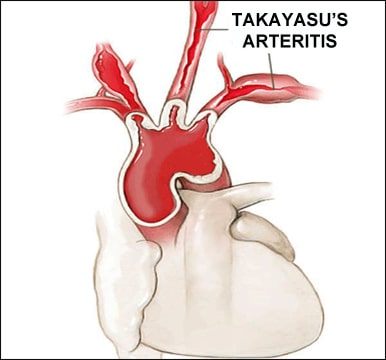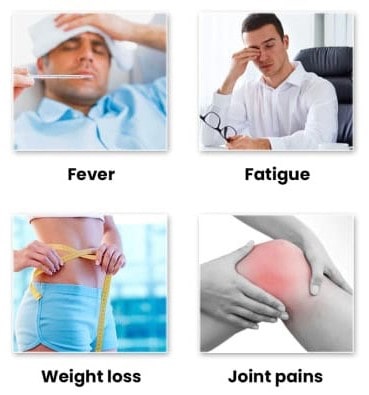Takayasu Arteritis

Takayasu Arteritis
What is Takayasu arteritis?
This is a medical condition characterized by inflammation (swelling) of the walls of big tubes carrying blood to different parts of the body. These tubes are called large arteries and include aorta and its direct branches like the ones supplying to brain, limbs, kidneys, intestines etc. The inflammation is due to disturbance in self-defense mechanisms of the body (immune system). If the disease is not diagnosed and treated early in the phase when inflammation is present, it leads to narrowing of lumen of the affected artery and hampers blood flow to vital organs of the body. During early phase, this narrowing is reversible; but if there is a prolonged delay in treatment, the changes become medically irreversible. Sometimes, rapid inflammation leads to dilation and aneurysms of the affected arteries.
Who gets Takyasu arteritis?
It is generally a disease of young females less than 40 years of age and affects young children also. However, males and individuals of more than 40 years of age are also rarely affected.
What are the symptoms of Takyasu arteritis?
Non specific symptoms present generally in initial phase of disease
- Fatigue or weakness
- Prolonged Fever (in early disease)
- Muscle and joint pain
- Weight loss
- Exertional Breathlessness or palpitation if there is involvement of heart
- Rarely nodular painful swelling of tissue underneath skin (rare)
Specific symptoms that signify narrowing of arteries include Pain or crampy feeling in arms and calf after working for some time or walking a short distance. The symptoms get relieved after few minutes of rest, Absent pulses, Dizziness, Blurring of vision or transient blackouts; Fainting episodes on standing, uncontrolled hypertension (high blood pressure) or persistent headache.. If the disease is not treated at this stage, patient may present with complications like stroke and paralysis, heart failure and kidney failure

How do we diagnose Takyasu arteritis?
High index of suspicion is required. The tests used to diagnose this condition include imaging of the blood vessels that can be either conventional angiography, CT angiography, MR angiography and nowadays PET CT scan. Patients have to do certain blood tests like routine hemogram, kidney function tests and tests to suggest inflammation ie. ESR and CRP.
The patient has to be treated by a team consisting of rheumatologist and cardiologist and sometimes urologists and vascular surgeons.
What is the drug management?
Since untreated Takayasu arteritis may lead to debilitating complications, aggressive treatment is required.
The initial treatment includes a combination of steroids and second-line agents. Steroids although have got various side effects, it is very important in this medical condition. The side effects can be managed by using steroids appropriately as per the advice of your doctor.
Apart from the steroids, second-line agents, which can be used, are Mycophenolate, cyclophosphamide, and Azathioprine.
In recent times, there are newer medications called biological agents like Tocilizumab that can reduce the requirement of steroids for control of disease activity. These agents are also preferred in certain situations or in difficult to treat conditions.
Once inflammation is controlled by medical management, the patient needs to be assessed by a cardiologist or vascular surgeons for intervention procedures. These procedures aim at opening up the irreversibly narrowed arteries, generally when more than BO% of the lumen of the blood vessel is compromised and the patient is having debilitating symptoms or impending complications. Multiple procedures may be required sometimes.
What is the cost of the treatment?
Depending on the type of the drug, the cost can be around 5,000 to 8000 rupees per month. In case biologicals are considered, the cost may significantly high depending on the nature of the drug.
How long should I continue the medications and how frequently should I come for follow up?
The medications need to be continued for life long as the vasculitis can relapse back. Patients need to come for regular 3 monthly follow up visits.
